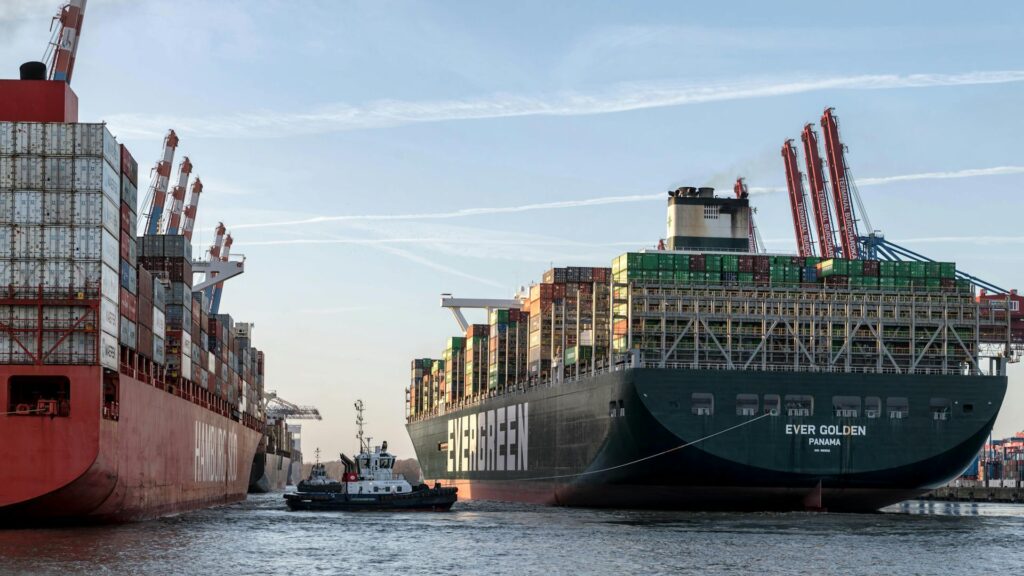
In the context of the rapid development of cross – border trade, “double clearance and tax – inclusive”, as a seemingly convenient logistics service model, has attracted the attention of many foreign trade practitioners and cross – border e – commerce sellers. However, the Double Clearance and Tax – Inclusive Risks behind it should not be underestimated, especially for the transportation of large quantities or high – value goods. Once the risks break out, they may cause serious consequences. The following is an in – depth analysis of the risks behind double clearance and tax – inclusive from multiple dimensions.
I. The Concept and Model Characteristics of Double Clearance and Tax – Inclusive
(A) Definition Analysis
In “double clearance and tax – inclusive”, “double clearance” includes two key links: export customs declaration and import customs clearance. “Tax – inclusive” means that all kinds of taxes and fees generated during the import and export of goods, such as tariffs, value – added taxes, and consumption taxes, are borne by the service provider. In actual operations, freight forwarders or logistics companies provide this comprehensive logistics service. After the consignor delivers the goods and pays the total cost including freight and taxes, the subsequent complex processes such as customs declaration, customs clearance, and tax payment are all handled by the service provider.
(B) The Attractiveness of the Model
The greatest advantage of this model lies in its convenience, especially for small and medium sellers, start – up enterprises, and cross – border trade beginners who lack professional knowledge of customs declaration and clearance. It allows relevant enterprises to get rid of the cumbersome logistics procedures and focus more on product sales. But under this convenient appearance, there are many potential crises hidden.
II. The Main Operation and Risk Hidden Dangers of Double Clearance and Tax – Inclusive
(A) Main Composition
In the double clearance and tax – inclusive service system, the customs declarants and customs clearance parties are usually freight forwarders, logistics companies providing services, or their cooperative professional customs declaration firms and customs clearance firms. These subjects rely on industry resources and connections to be responsible for the customs declaration and clearance procedures of goods from the place of departure to the destination.
(B) Risks of Illegal Operations
In the fierce market competition, some service providers often take illegal operations to reduce costs and improve price competitiveness. For example, under – reporting the value of goods, falsely declaring the name of goods, and even concealing prohibited and restricted goods during customs declaration often occur. Since the consignor does not directly participate in the customs declaration and clearance process, it is difficult to detect and stop these illegal acts. Once problems occur, they can only passively bear the consequences.
III. The Characteristics of Cargo Ownership Circulation in Double Clearance and Tax – Inclusive
(A) The Process of Cargo Ownership Transfer
In the double clearance and tax – inclusive model, the circulation of cargo ownership is complex and uncertain. After the consignor delivers the goods, the freight forwarder or logistics company becomes the actual carrier, controlling the whole process of transportation, customs declaration, and customs clearance. During transportation, they can decide the transportation route, mode, and goods storage. During customs declaration and clearance, although the ownership of the goods still belongs to the consignor, the actual control power of the consignor is further weakened until the goods are delivered to the consignee and the ownership of the goods is transferred.
(B) Potential Risk Points
The separation of cargo ownership and control power makes the consignor face many risks. Once the freight forwarder or logistics company has poor management, goes bankrupt, or encounters force majeure, the safety of the goods and the ownership of the goods will be threatened. The non – unity of cargo ownership and control power may lead to the consignor being in a passive position in the process of cargo transportation and customs clearance and unable to effectively protect their own rights and interests.
IV. The Core Risk Types of Double Clearance and Tax – Inclusive
(A) Credit Risk
If an enterprise goes bankrupt due to poor management, the goods may be disposed of by creditors, and the consignor will find it difficult to safeguard its rights, which will seriously affect the enterprise’s capital turnover and normal operation. The credit status of the service provider is directly related to the safety of the goods and the smooth progress of transportation. If the service provider lacks integrity or has operational problems, the consignor will face great risks.
(B) Risk of Customs Detention of Goods
Illegal customs declaration and clearance will greatly increase the risk of goods being detained by customs. Once the goods are identified as untruthfully declared or suspected of smuggling, they will be detained. In the process of handling, the consignor needs to provide a large number of supporting documents. Even if the goods are finally proved legal, they still need to bear high costs such as warehousing, inspection, and fines, and may also lead to the depreciation of goods due to slow sales. In serious cases, the consignor may even face criminal liability, which will have a significant impact on the enterprise’s operation and the future of the responsible person.
(C) Risk of Cargo Ownership Disputes
The separation of cargo ownership and control power is prone to disputes. After the goods arrive at the port, bad freight forwarders may ask for extra fees for various reasons and refuse to deliver the goods. The consignee may also collude with the freight forwarder to refuse to pay the 货款 and take away the goods on the grounds of quality and quantity problems. Since the consignor cannot directly control the goods, they are often at a disadvantage in disputes. Small enterprises and individual sellers may even have their capital chains broken and go bankrupt.
V. Special Risk Considerations for Large Quantities and High – Value Goods
(A) Large Scale of Loss
If there are problems with large quantities of goods, such as customs detention, loss, or damage, the economic loss will be very huge. Not only the value of the goods themselves will be damaged, but also a series of chain reactions such as disrupted production plans, damaged reputation, and lost orders will be triggered, bringing serious economic and operational crises to enterprises.
(B) High Risk of Embezzlement
High – value goods are easy to become the target of bad freight forwarders. Lawbreakers may take risks to embezzle the goods for profit. The consignor is difficult to bear the huge loss, which may lead to the enterprise’s capital chain breaking and bankruptcy. At the same time, high – value goods are under strict customs supervision and frequent inspection, and illegal operations are more likely to be found out. The consignor faces more severe legal liability and economic punishment.
(C) Advantages of Formal Channels
In contrast, for large quantities and high – value goods, choosing formal customs declaration and clearance channels, although the procedures are cumbersome and the cost is slightly higher, can ensure the safety of goods and the stability of cargo ownership. The consignor can directly participate in the process, communicate and solve problems in a timely manner, reduce risks, and protect the enterprise’s interests and reputation.
Although double clearance and tax – inclusive bring certain convenience, the risks are like hidden reefs. When transporting large quantities and high – value goods, more caution should be exercised in the choice. In cross – border trade, only by adhering to the principle of legality and compliance and selecting reliable partners can the smooth flow of goods be ensured and the steady development of enterprises be realized. If you want to learn more about cross – border logistics risk prevention strategies or how to screen high – quality logistics partners, you are welcome to communicate at any time.





